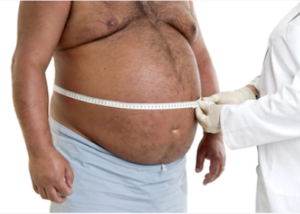
Shoulder pain is linked to heart disease and might even mean a heart attack in progress.
But this doesn’t mean you should panic every time your shoulder aches or you get a twinge of pain in it.
The University of Utah School of Medicine did a study on shoulder pain, concluding that this symptom may be a sign of ongoing coronary artery disease.
• The more heart disease risk factors that this study’s participants had, the more likely it was that they had shoulder problems.
• There were 36 participants who had the most severe cluster of heart disease risk factors.
These subjects were 4.6 times more likely to have a shoulder problem than the subjects who had zero risk factors.
• Participants with moderate-level heart disease risk factors were less likely to have shoulder issues.
So based on these correlations, is it logical to deduce that in some individuals, shoulder pain means that there’s something wrong with their heart?
This is where it gets really tricky. The researchers have established that there is only a correlation. They have not determined a cause and effect:
Does heart disease cause shoulder problems?
Do shoulder problems cause heart disease?
Do Not Ignore Shoulder Pain
“It is common knowledge that a chest pain that radiates to the left arm, left shoulder or lower jaw is more likely to be associated with underlying coronary artery disease/angina,” says Asim Cheema, MD, who’s board certified in internal medicine, cardiovascular diseases and interventional cardiology by the American Board of Internal Medicine. Dr. Cheema is with Your Doctors Online, an online doctor chat site.
“Similarly, less common presentations of CAD include isolated left arm, lower jaw or isolated left shoulder pain.
“Usually, it is not the location of pain/discomfort, but rather, its positive association with physical exertion that is more significant for underlying CAD.”
Though shoulder pain can mean a heart attack IN PROGRESS, what about ongoing or chronic shoulder symptoms, which are not followed by a cardiac event, especially pain that occurs only upon certain positions or certain use of the shoulder (e.g., lifting arm over the head)?
Theory on the Association Between Shoulder Pain and Heart Disease

Shutterstock/ruigsantos
Two major risk factors for coronary artery disease are obesity and never exercising. The risk of never exercising is major even in thin people.
But obesity and never exercising are also risk factors for shoulder problems!
First of all, obese people — particularly morbidly — are less likely than are smaller people to partake in ongoing strength training workouts, such as overhead barbell presses, that create strong and sturdy shoulders.
However, thin people who don’t strength train are perhaps equally at risk for eventually developing chronic shoulder problems.
Thus, the presence of obesity and avoidance of strength training are highly indicative of lifestyles that create multiple risk factors for coronary artery disease.
For example, that thin person who never exercises is more likely to have a junk food diet and smoke than is a thin person who faithfully hits the gym three times a week for intense upper-body workouts.
Shoulder Pain and Heart Disease
If you have shoulder pain, this might be from a recent strain, a movement in everyday living that aggravated a weak rotator cuff tendon.
In other words, your shoulders are out of condition.
If your musculoskeletal system is out of shape, it stands to reason that your heart isn’t in the best condition either—simply because you’re not much into working out.
Now if you have shoulder pain resulting from overdoing it with the bench pressing or use of a sledge hammer when chopping wood for the first time, it’s pretty obvious this pain is from overloading the shoulder with movement against heavy resistance.
Keep things in perspective.
You might awaken one morning with mysterious pain in a shoulder. This could be from the way you slept on it.
If you’ve always felt you have “weak” shoulders, take up strength training.
There’s no need to panic over pain in the shoulder in the absence of other concerning symptoms such as chest pain, jaw pain, nausea, clammy skin and a feeling that your body isn’t getting enough oxygen.










































